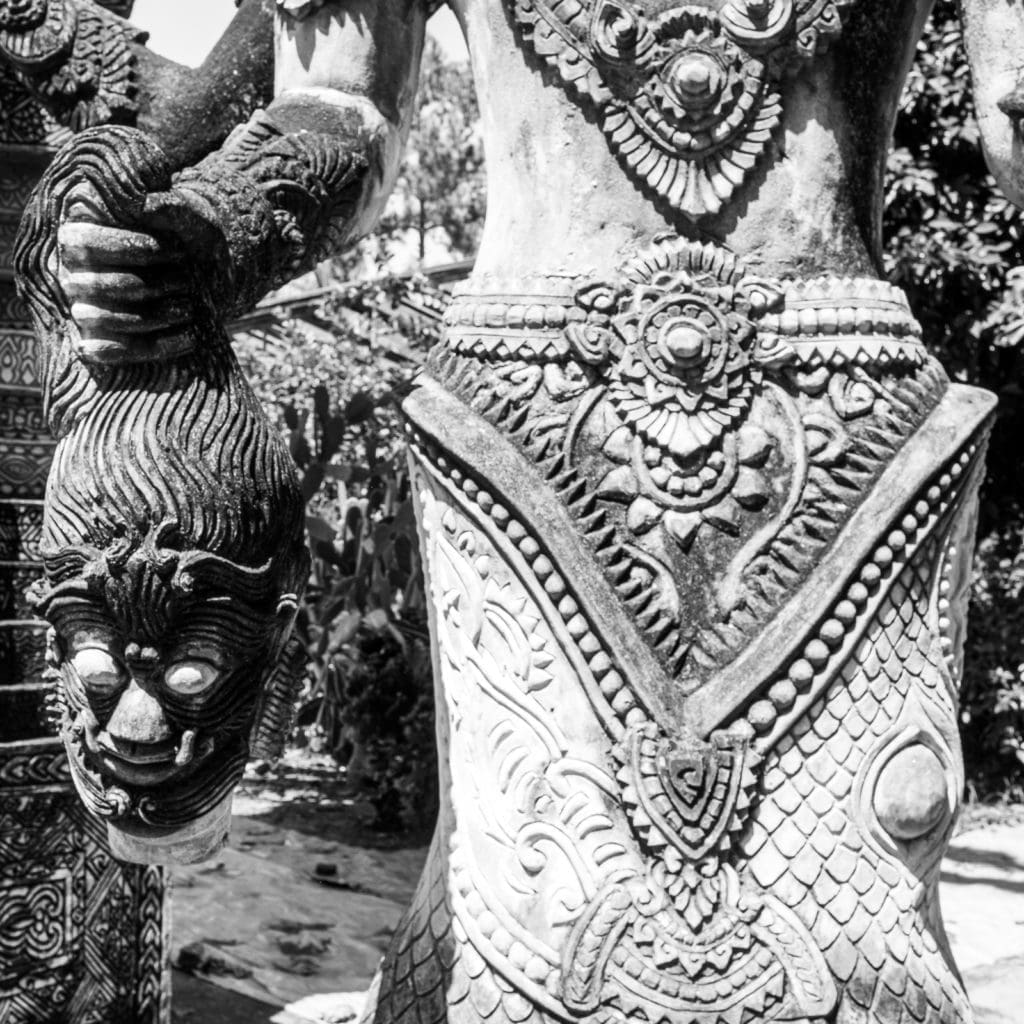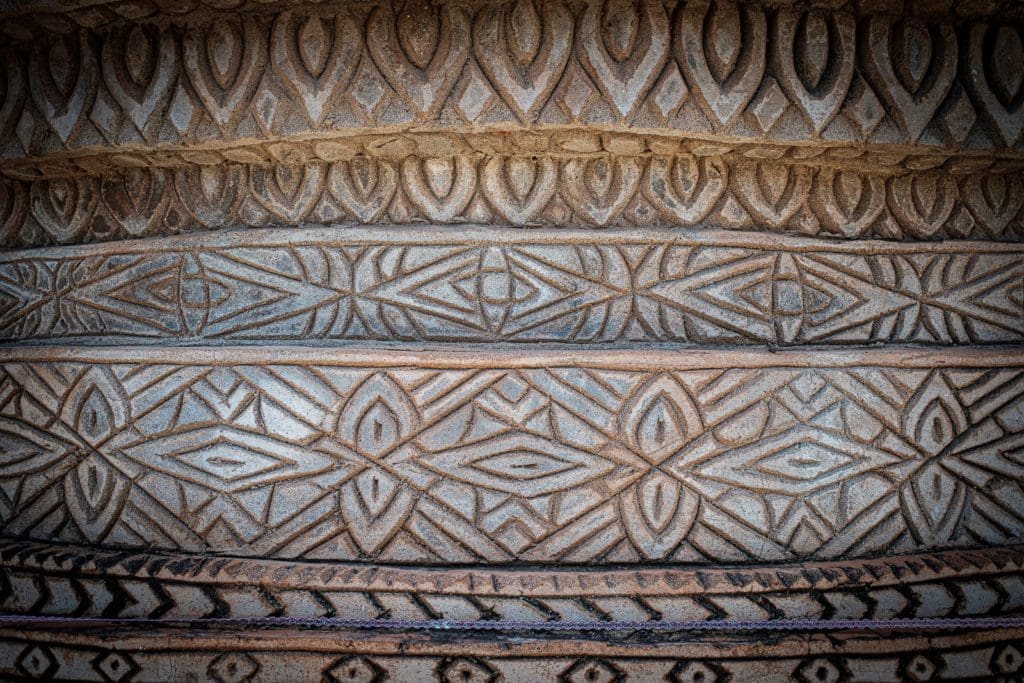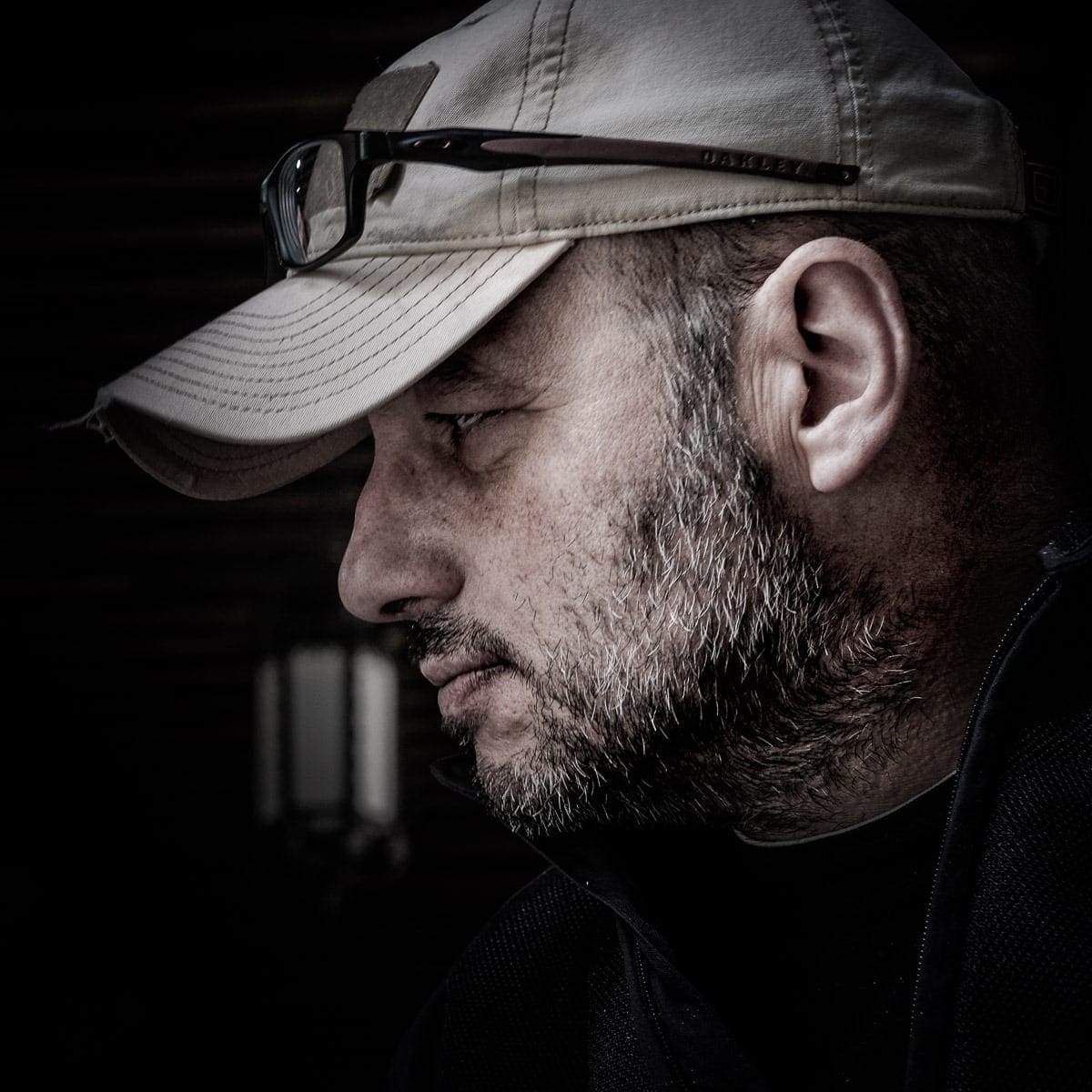Bunleua Sulila was the seventh of eight children. According to a legend, the young Bunleua Sulila fell into a cave near Nong Khai in Thailand, his hometown. There, he encountered the hermit Keoku – who became his spiritual father – and this fact completely changed the course of his life.
The apprenticeship lasted many years, and once it was over, filled with Keoku’s teachings and fuelled by an eccentric nature, Sulilat decided to devote himself to monumental sculpture.
In 1958 he began the construction of his first Buddhist-inspired figure garden in neighbouring Vientiane, the capital of Laos. However, due to the political instability of the country after the communist revolution in 1975, Sulilat decided to cross the Mekong and return to his homeland in Nong Khai. In 1978 he chose to continue his work in the grace of the Buddha with the construction of the large monumental sculpture park, known today as Sala Keoku, or Wat Khaek, in honour of his master and the magnificence of his teachings.
Sulilat’s eccentric and charming personality and the mixture of Buddhism and Hinduism he professed exerted a great fascination on some of the locals. So Sala Keoku became a kind of headquarters for a religious sect. Sulilat was given the title of Luang Pu – usually reserved for monks – although he was (and remained until his death) secular.
Enormous amounts of concrete were needed to build Sala Keoku. They were provided by hundreds of faithful people. Those were the same people who worked unpaid to create the enormous statues, some of them more than 25 metres high.
Some residents of the area considered Sulilat mad, but this did not prevent the completion of the magnificent and mysterious garden of Sala Keoku, a great and magnetic work in honour of the Buddha where Sulilat met his death in 1996, after falling from one of the tallest statues. His mummified body is still preserved on the third floor of the only building in the garden, which also serves as the temple (Wat) at Sala Keoku.

Buddha and the seven-headed Naga
Of the hundreds of Karmic and Buddhist statues and representations in the garden, the one that catches the visitor’s eye the most is the huge statue of Buddha meditating under the protection of the seven-headed Naga.
Although it is part of one of the most solid Buddhist legends, this one drawn by Sulilat stands out for its peculiar depiction of the Naga. Although stylised and at 30 metres high, it takes on a truthfulness and naturalness that you can almost hear the hissing of his seven tongues.
Perhaps the most enigmatic part of the park, however, is the Wheel of Life, a circular group of multi-part sculptures representing the karmic cycle of birth and death through a progression of tarot-like characters. The composition culminates with a young man stepping through the fence surrounding the entire installation to become a statue of Buddha on the opposite side of the wheel. The Wheel of Life is the only monumental sculpture where votive incense can be lit and flower crowns placed on the statues.
Sala Keoku – or Wat Khaek – is located about 5 kilometres east of the town of Nong Khai, on the banks of that piece of the Mekong that marks the border between Thailand and Laos.







